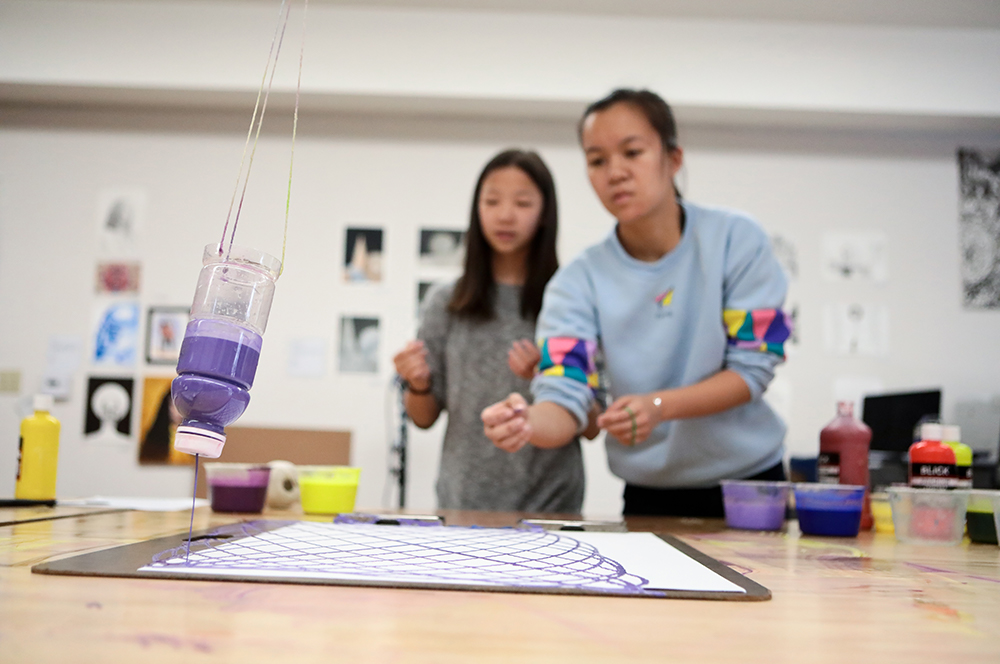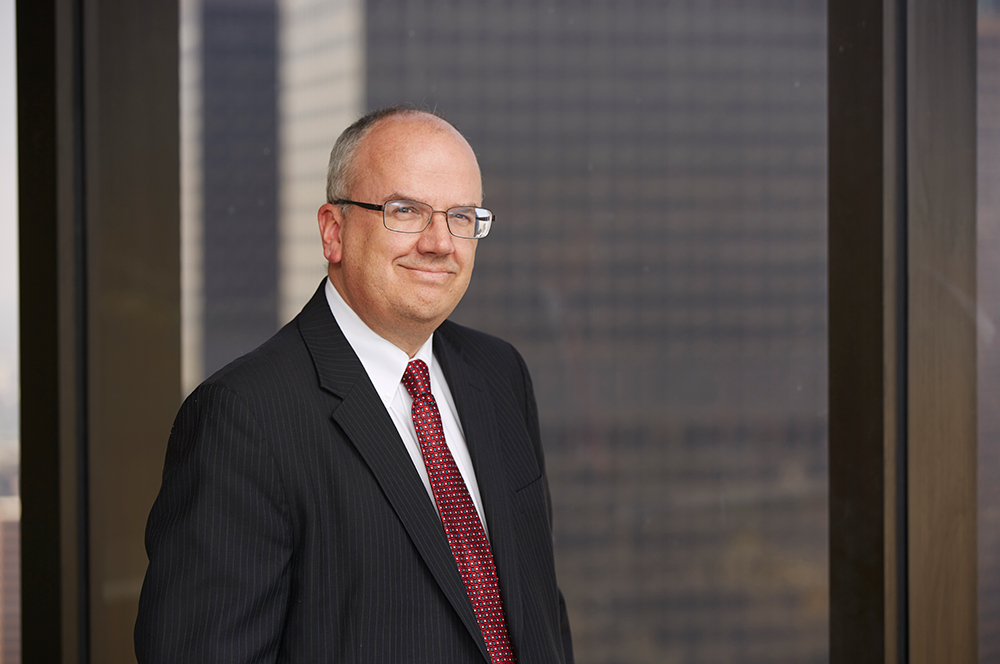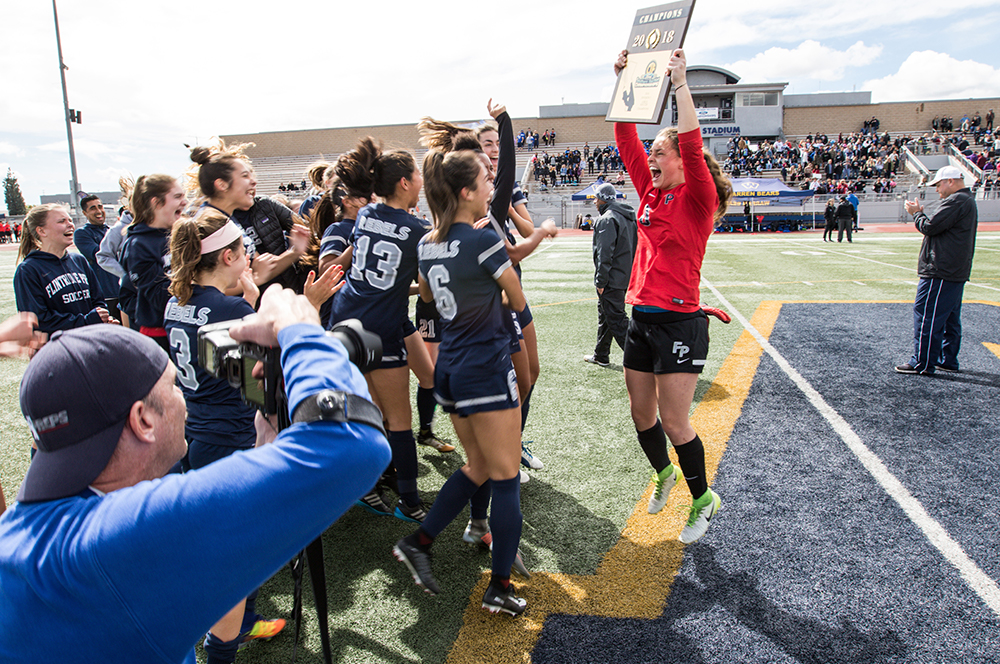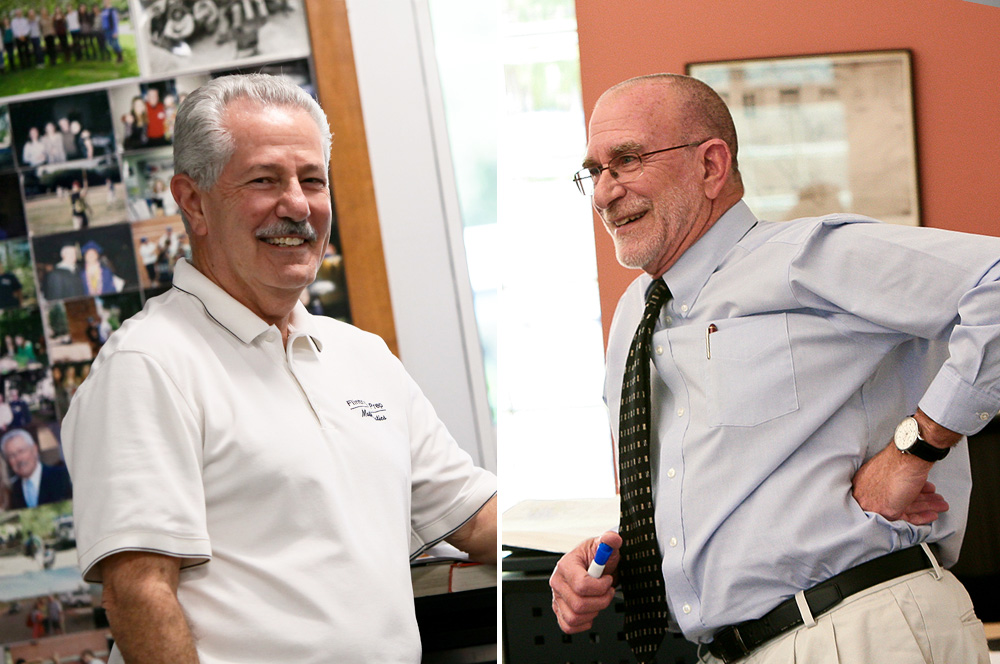A Time For Collaboration And Balance
by Kelsey Denham
It’s 1:45 on a sunny Thursday afternoon at Prep, and campus is bustling with activity. Winter play hopefuls are practicing before their auditions in the Black Box; across the field, groups spill out of Open Gym volleyball and basketball games; in the room just above, a basketball informational meeting lets out, and a couple of friends chat excitedly about wanting to go out for the team; up the stairs toward Ahmanson, students are popping out of a talk with visiting artist Jeff Morrical, inspired and ready to make their own folded paper art on the plaza, where art and library faculty have set up folding and painting stations; through the library doors and up the spiral staircase—now adorned with Morrical’s life-size paper art—students do quiet work in the stacks; outside, tables are visible across campus peppered with assorted students working together, chatting, laughing, relaxing and enjoying the sun.
This was the view of campus during an October Community Block period last year, when collaboration, creativity, experimentation, discussion and genuine engagement came to the fore. And the best part? Students independently chose what to do with their time for those 77 minutes.
Among the Prep student body and faculty, there’s certainly no shortage of creativity on campus. What there is often a shortage of, though, is time. Students juggle clubs, sports, homework, projects and off-campus activities, while faculty split time among lesson planning, grading, office hours, meetings, professional development opportunities and family obligations. Coordinating schedules for students and faculty to collaborate outside of the classroom can be tricky even during the best of weeks. That’s where Community Block comes in.
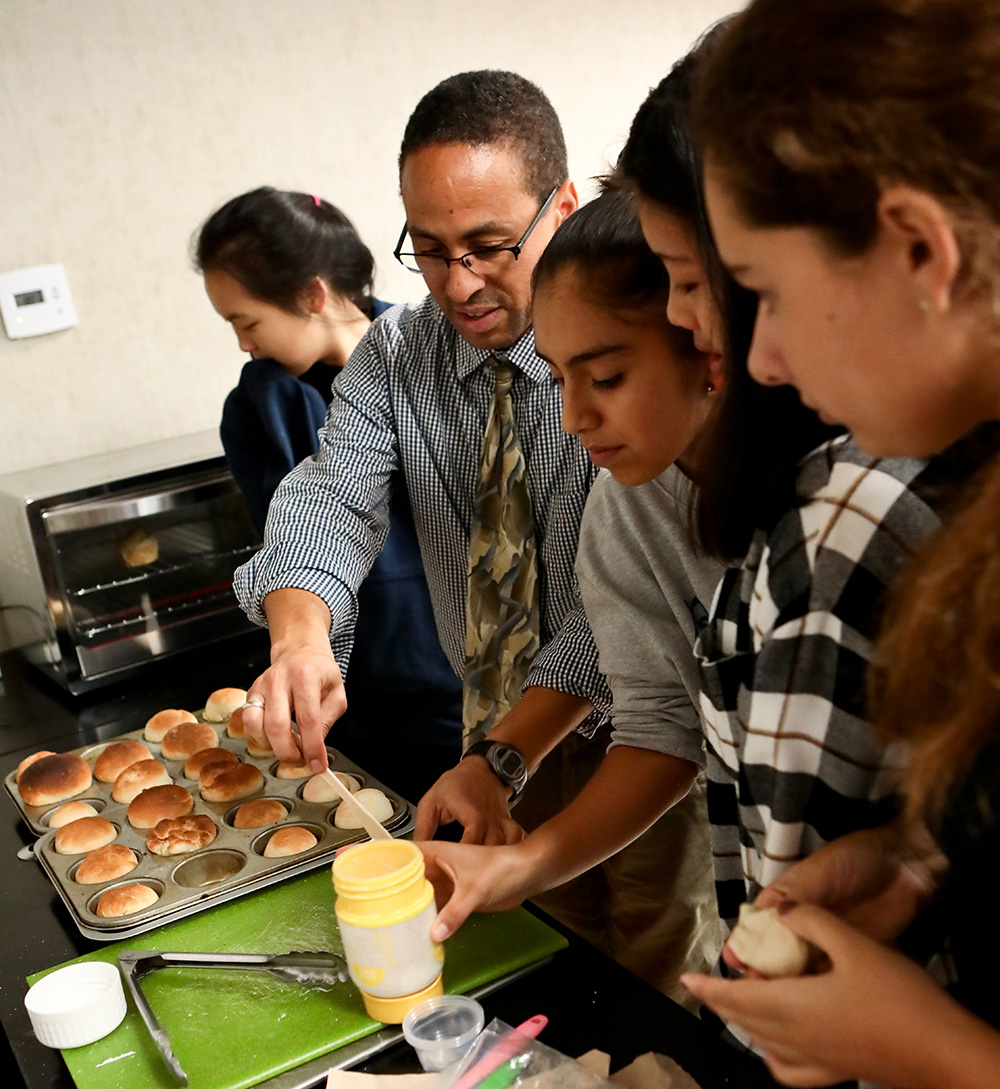
The Gift of Time
Community Block came to be at Prep after the administration adopted a modified block schedule in 2011, when, a couple of days per month, classes were extended into 77-minute periods. The change was the result of an organic movement toward collaborative, student-centered learning, which can boost mastery, increase focus and decrease stress among students. Fewer transitions during the day and the opportunity for more hands-on learning made the schedule appealing to Prep faculty.
An open Thursday afternoon block gave the schedule a characteristic Prep twist. These 77 minutes of unscheduled and flexible time allow faculty and students the chance to fill those moments creatively, independently and in a way that suits their needs best that week.
“We knew that the open space in our schedule would help nurture relationships and encourage experimentation,” says Dean of Studies Sarah Cooper. “It’s a time for relationship building, enriching activities and, sometimes, simply relaxing together.” Noting the success, the school’s Academic Affairs committee opted for a name change to Community Block, in honor of its ability to bring students, faculty and staff together.
Community Block is now a Prep tradition, opening up the opportunity for dynamic, varied learning activities across disciplines and grade levels.
“To have this time is really precious to people,” says Dean of Faculty Vanessa Walker- Oakes. “It’s a part of the week when everyone is free and available to interact with one another. We wanted to encourage this informal idea-sharing that has always been the prime mover at Prep.”
Community Block Highlights
Prep is defined by those small, serendipitous moments that become something much larger—when two students discover a shared love of cooking, crafts or ballroom dancing, or when two teachers get excited about a 3D-printed ceramics video they saw online. Before you know it, this moment becomes a Community Block event, where multiple faculty and students bring their skills, talents and interests to campus.
Much like that early October afternoon, Community Blocks throughout the years have resulted in impressive confluences of people and events. In the 2017-18 school year alone,
Community Block brought about dozens of collaborations that would not have been possible otherwise. It works to solve the challenges of student and faculty scheduling by offering a time for everyone to come together. This scheduled time also allows faculty to dabble in topics they’d love to cover or expand upon in class but simply cannot, given the time limitations of a traditional seven-period day.
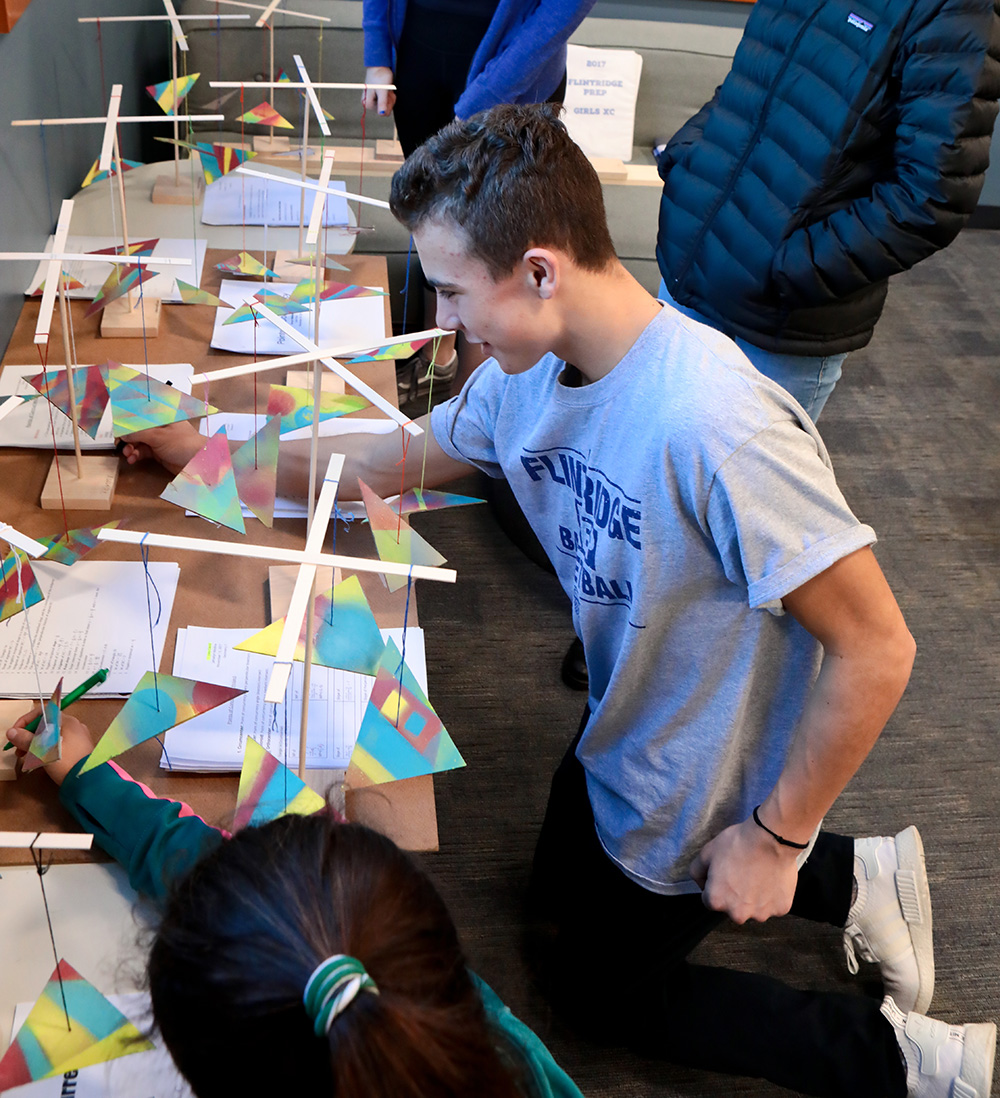
Here are just some of the scenes observed during Community Blocks throughout the 2017-18 school year:
EDUCATIONAL EATS. As an extension of his 9th-grade science class’s biochemistry unit, Dr. David Herman hosted a Community Block on bread baking, with students helping and learning from start to finish. The session complemented the section of the unit in which students learn about the structures and functions of different macromolecules such as fats, proteins and sugars, Herman says. “Between prepping the dough and cooking, discussion and cleaning up together, the block periods are perfect for an activity like this,” he says, “and they allow a healthy balance of hands-on learning, discussion and a freshly baked snack.”
FORM MEETS FUNCTION. Block classes practically beg for cross-curricular learning, providing the chance for two or more departments to come together in symbiotic ways. In a STEAM-inspired meeting of art and science, art teacher Melissa Manfull, physics teacher Reid Fritz and math teacher Beth Pattinelli worked with students to use stencils to create patterns using primary colors and shapes. The striking, balanced mobiles were then shown at the STEAM & Service Fair—also displayed to everyone on campus during Community Block—complete with a make-it-yourself station for guests. “Community Block allowed us to truly collaborate, rather than separately contribute to a joint project. The added bonus was watching students help each other. The exchange of math and art ideas among the students was exciting,” Pattinelli says.
A RARE PERFORMANCE BY STUDENTS, FOR STUDENTS. The great potential of Community Block isn’t about packing more information into an already full day. Sometimes it’s simply to help students share what they’ve worked so hard on with each other. There is perhaps no better example of this than the Performing Arts Showcase, a unique performance entirely by students, for students. Performing artists of all levels and disciplines hosted an assembly-style variety show in Norris Auditorium to an audience of fellow students. “It is important for art to be seen and experienced by our community,” says Performing Arts Department Chair Rob Lewis, “And it is a win for performers to have a chance to be appreciated for their artistic pursuits.”
DISSECTION & DISCOVERY. In an example of interdepartmental collaboration sparking student curiosity, Director of Student Technology Services Sylvie Andrews and math teacher Dr. Shane Frewen hosted a computer dissection session for students. The goal was for students to see the various internal components of the machines they use daily—including the hard drive, RAM and SPU, and how they are interconnected to make the computer work. “Community Block was great because the topic (computer hardware) doesn’t fit neatly into any one class and because the time frame is long enough for the students to guide some of the investigation,” says Frewen. “In general, I think Community Block can be a great place for teachers to share other interests they have that may be unrelated to their classes—or any classes on campus at all!”
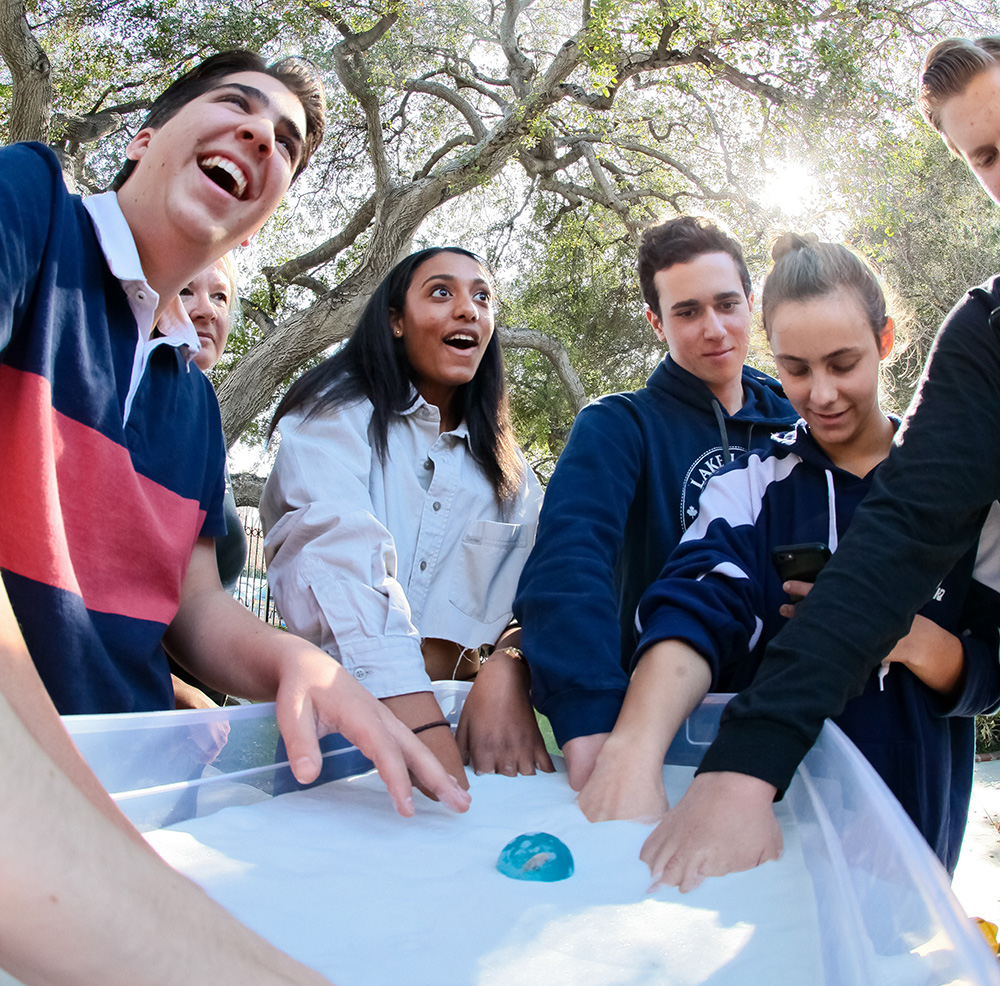
What’s Next for Community Block?
Academic Affairs was confident that a modified block schedule—with some traditional days and some block days—would be beneficial to the whole Prep community. The inclusion of Community Block was the happy result of saying “yes” to what, on the surface, might seem counterintuitive: to once in a while, on a busy day, schedule absolutely nothing. The sacredness of that unstructured time is part of what upholds the school’s mission of balance, authentic connection and independent decision making.
With the adoption of an adjusted modified block schedule beginning fall 2018, block weeks will increase from one per month to approximately one per week. Based on feedback from faculty and students to preserve the creative spirit of the free 77-minute period, Academic Affairs decided that two Community Blocks per month will be allotted for assemblies and other required curricular events. The other two will be deemed “sacrosanct,” when no required events are to be scheduled, ensuring students have the autonomy to decide what best fits their needs that week.
Ultimately, next year’s schedule reinforces what’s already worked so well on campus for years: faculty collaborating with colleagues from other disciplines to help students discover a new area of study, students working together to share ideas learned inside or outside of class, quiet moments of contemplation, a break for physical activity, tutoring or just some much-needed relaxation. And with the increase from monthly to weekly Community Blocks, the potential feels boundless.
“Students are already excited about the potential of more Community Blocks,” says Dean of Student Life Barrett Jamison. He points to Student Senate naming Community Block as one of their top priorities, with both peer counselors and seniors from the 8th Grade Buddies program already hard at work discussing possible activities.
“I think quadrupling Community Blocks next year is a great opportunity for all student groups (including The Big 3, FLINT and clubs) to establish a stronger connection with the student body,” says Commissioner General Ryan Huntley ’19. He notes that, despite initial student uncertainty over the new schedule, the opportunity to keep that spirit of serendipity alive on campus outweighs the growing pains of change. “I believe the biggest barrier between students and greater connection to these groups has been time restraints, so I hope that this new schedule will help solve that issue. If we all commit to making block schedule a communal space where all students can grow, it will become a positive change to our school. Even if students spend time working on homework or hanging with friends, it’s still an opportunity for them to grow closer to the Prep community.”
Faculty are also enthusiastic about the possibilities. Their April in-service was dedicated to sharing ideas about ways to use block periods innovatively. Between interactive learning stations, lively lab experiments and a lot more movement within the classroom, there is no lack of faculty creativity heading into next year.
“It’s infectious to be around creative colleagues and students,” says physics teacher Reid Fritz. “And just as exciting for me is the knowledge that next year we will have more opportunities to pursue these projects, improving upon previous ideas and coming up with new ones. Community Block asks the question, ‘What cool thing can you do?’ and then lets us go and do it.”

